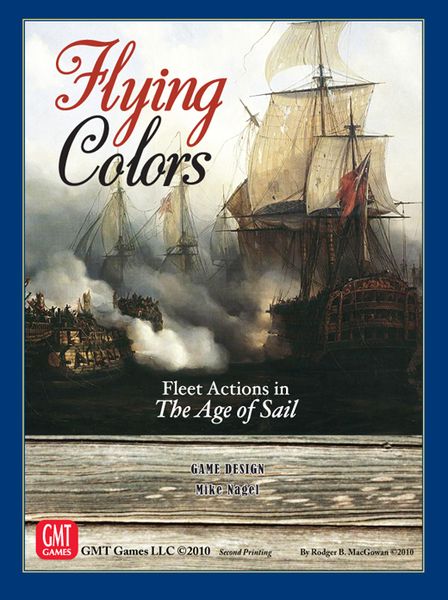Flying Colors (2003) Board Game
Flying Colors is a historical wargame that focuses on naval combat during the Age of Reason, American Revolutionary War, and Napoleonic era. It was released in 2003 and designed by Rodger B. MacGowan, Mike Nagel, and Mark Simonitch. The game is published by GMT Games and is known for its detailed simulation of naval battles.
Game Components of Flying Colors
How To Setup Flying Colors
Setting up Flying Colors involves preparing the specific scenario you wish to play. Each scenario has its own setup instructions, which include arranging ships, commanders, and any additional elements like shore batteries or weather conditions. Players must ensure all necessary components are placed correctly on the map according to the scenario’s specifications. The game comes with a detailed playbook that guides players through the setup process for each scenario.
Gameplay Mechanics and Game Objective
Player Experience
Flying Colors offers a fast-paced and realistic naval combat experience. Players can engage in battles ranging from small skirmishes to large fleet engagements, all within a few hours. The game is designed to be accessible, with a short and clear rulebook, making it enjoyable for both newcomers to naval warfare games and seasoned wargamers. The ability to play solo or with up to four players adds to the game’s versatility.
Pros
Cons
Personal Thoughts on Flying Colors
Flying Colors is ideal for history buffs and enthusiasts of naval warfare, particularly those interested in the Age of Sail. It offers a deep and immersive gaming experience with its detailed historical scenarios and realistic combat mechanics. The game is well-suited for players who enjoy tactical games and are willing to invest time in learning and setting up the scenarios. It is not for casual gamers looking for a quick, simple game, but rather for those who appreciate the depth and complexity of historical naval battles.
We are supported by our audience. When you purchase through links on our site, we may earn an affiliate commission, at no extra cost for you. Learn more.

